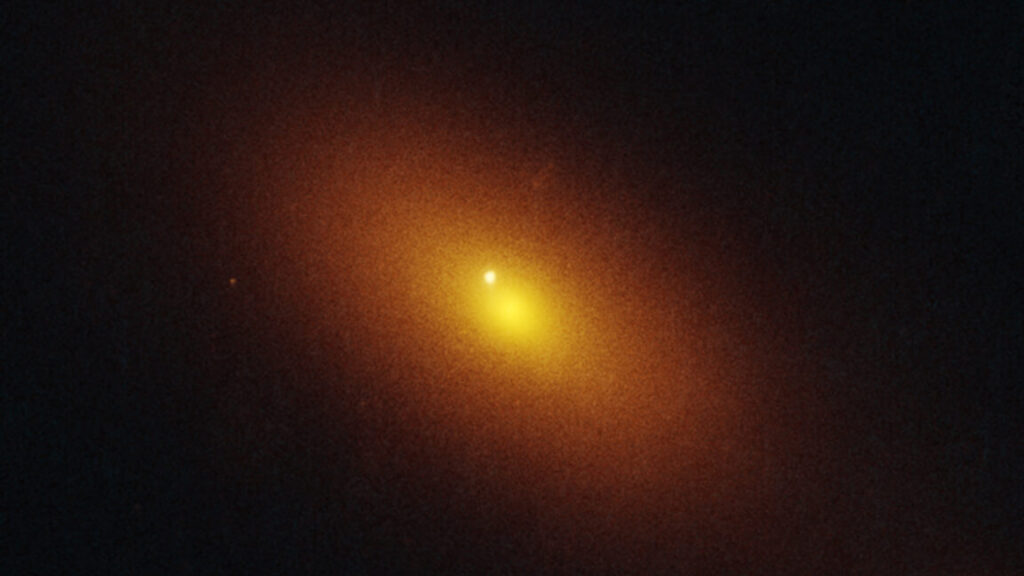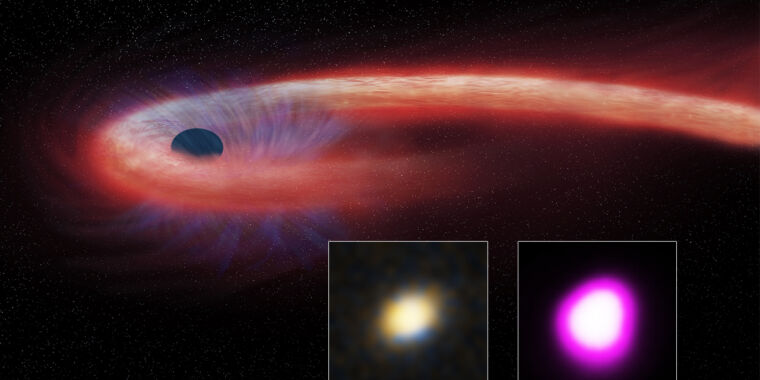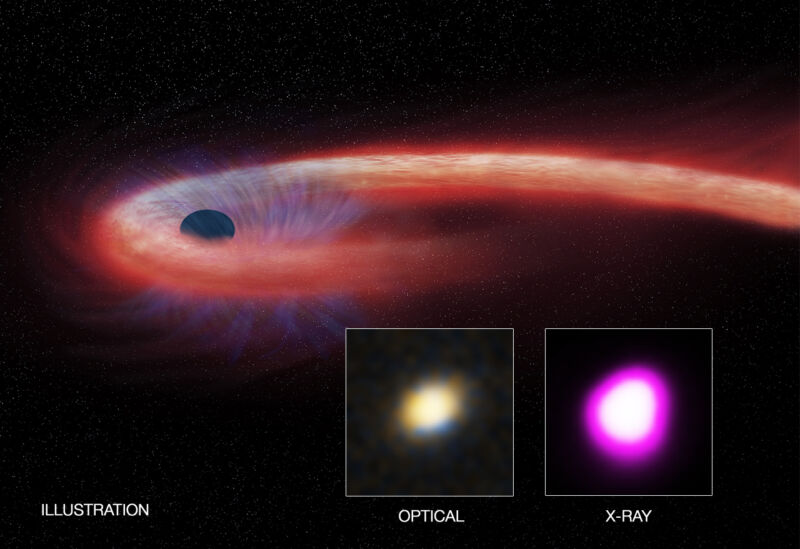A star has been destroyed by a wandering supermassive black hole
But note the phrasing there: “in most cases” and “eventually.” Even in the cases where a merger takes place, the process is slow, potentially taking millions or even billions of years. As a result, a large galaxy might have as many as 100 extremely large black holes wandering about, with about 10 of them having masses of over 106 times that of the Sun. And the galaxy that AT2024tvd resides in is very large.
One consequence of all these black holes wandering about is that not all of them will end up merging. If two of them approach the central black hole at the same time, then it’s possible for gravitational interactions to eject the smallest of them at nearly the velocity needed to escape the galaxy entirely. As a result, for millions of years afterwards, these supermassive black holes may be found at quite a distance from the galaxy’s core.
At the moment, it’s not possible to tell which of these explanations accounts for AT2024tvd’s location. The galaxy it’s in doesn’t seem to have undergone a recent merger, but there is the potential for this to be a straggler from a far-earlier merger.
It’s notable that all of the galaxies where we’ve seen an off-center tidal disruption event are very large. The paper that describes AT2024tvd suggests this is no accident: larger galaxies mean more mergers in the past, and thus more supermassive black holes floating around the interior. They also suggest that off-center events will be the only ones we see in large galaxies. That’s because larger galaxies will have larger supermassive black holes at their center. And, once a supermassive black hole gets big enough, its event horizon is so far out that stars can pass through it before they get disrupted, and all the energetic release would take place inside the black hole.
Presumably, if you were close enough to see this happen, the star would just fade out of existence.
The arXiv. Abstract number: 2502.17661 (About the arXiv). To be published in The Astrophysical Journal Letters.
A star has been destroyed by a wandering supermassive black hole Read More »


